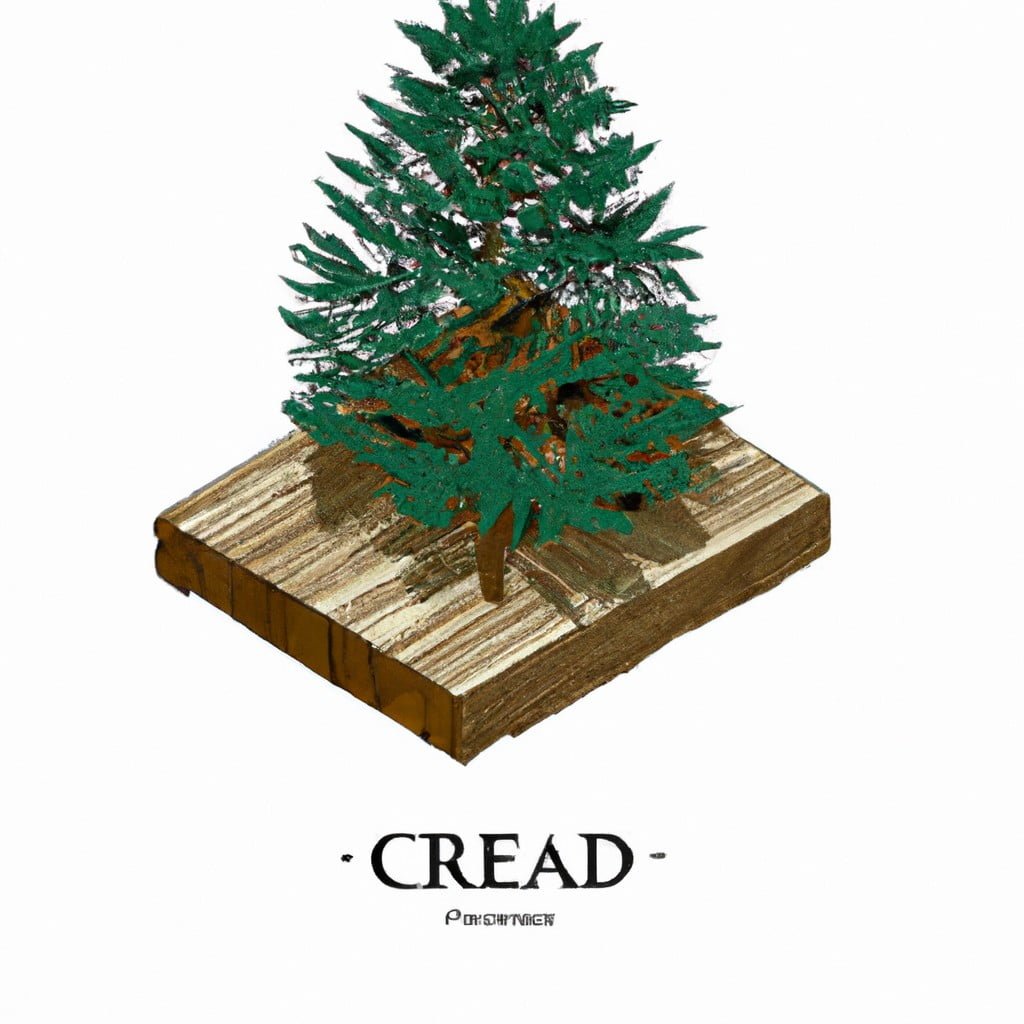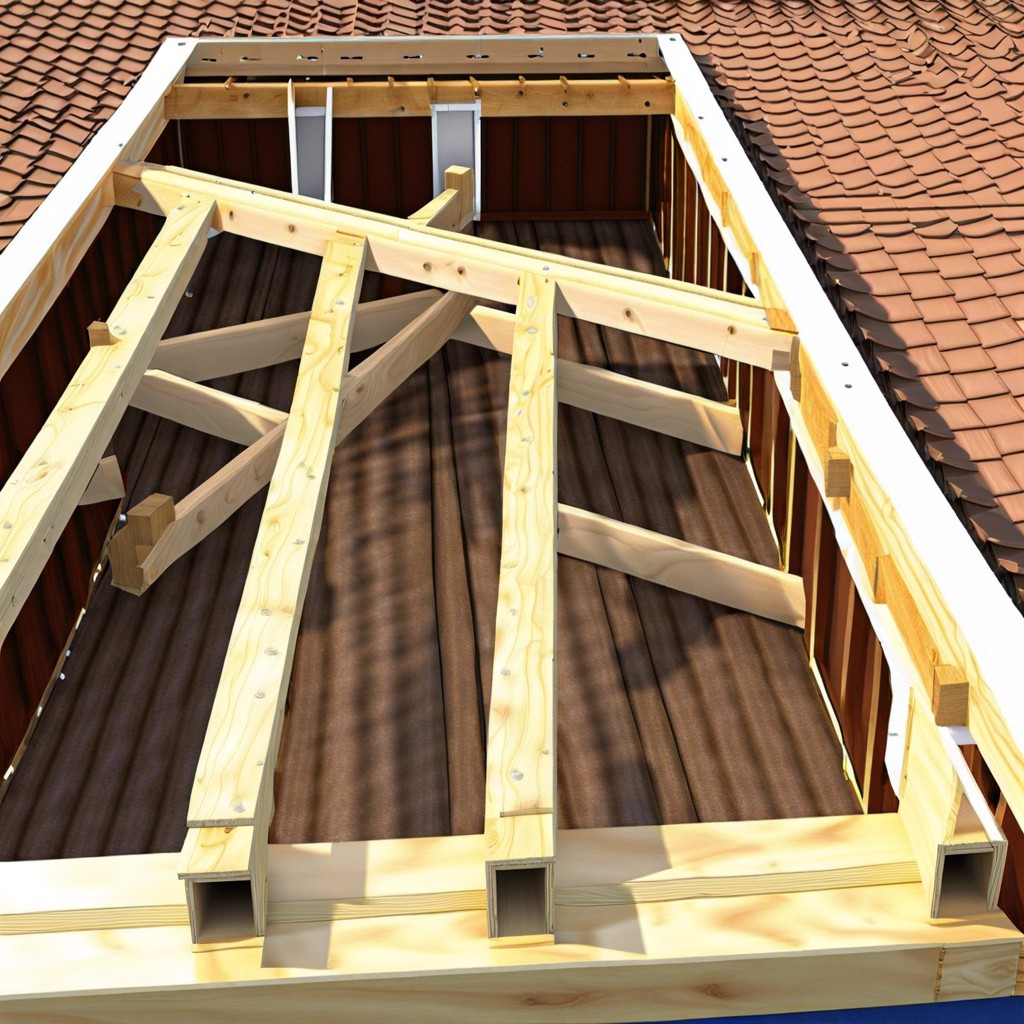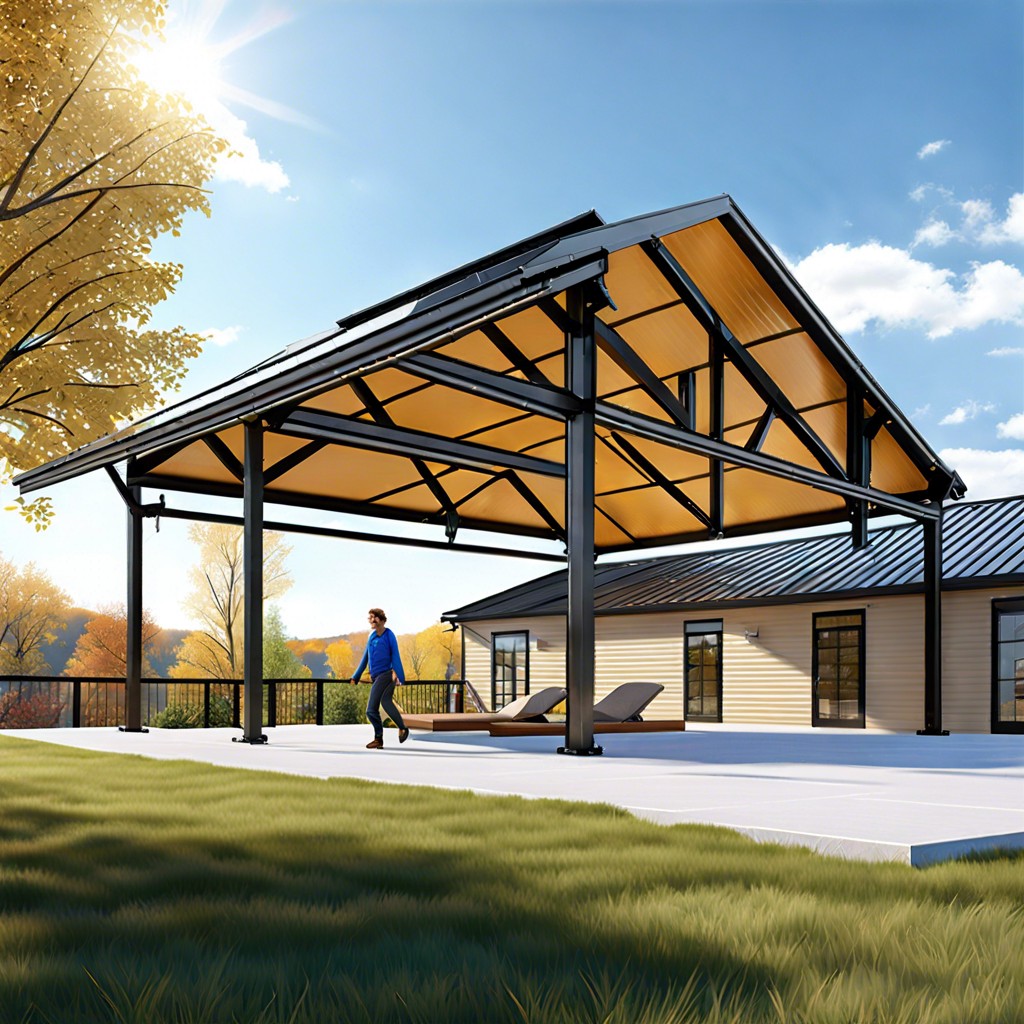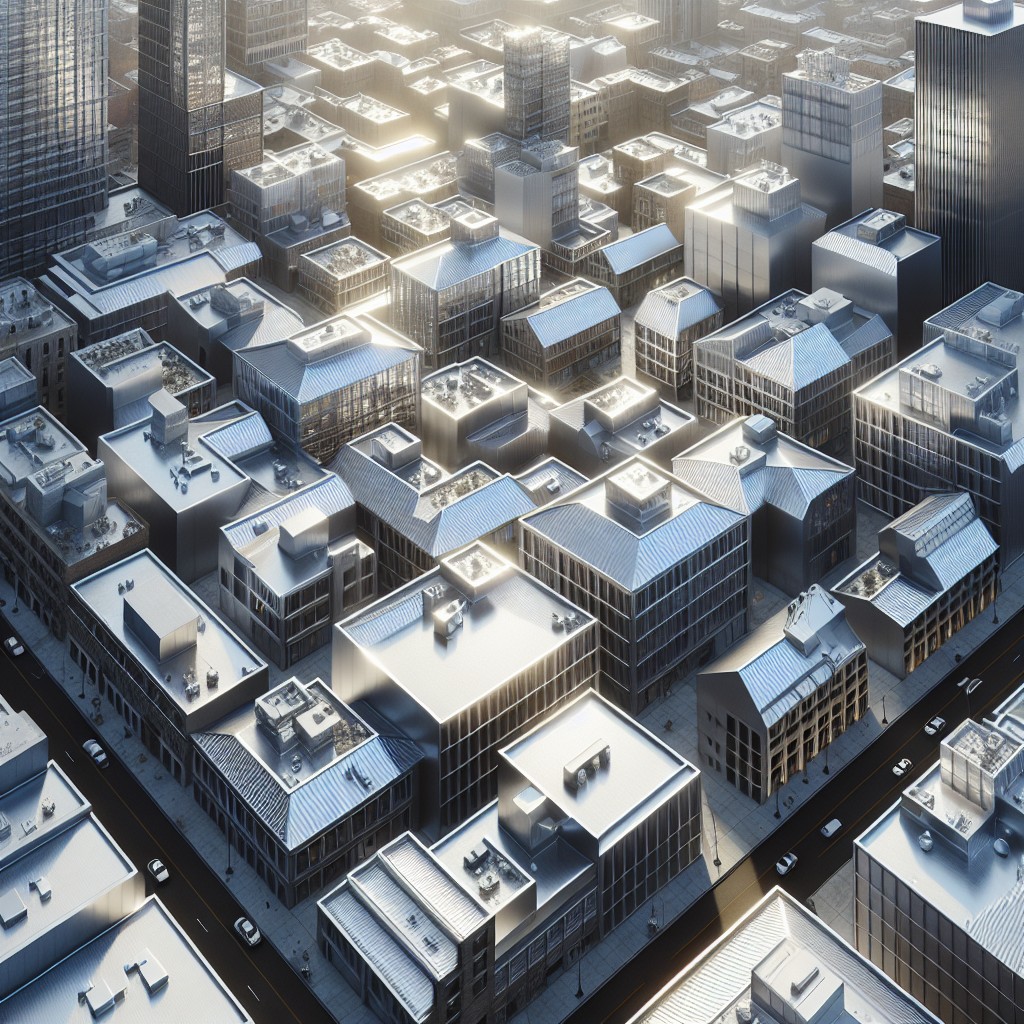Last updated on
Discover the impressive longevity of cedar roofs and factors that contribute to their lifespan in this comprehensive guide.
Welcome to my latest blog post where we will explore the question on every homeowner’s mind: How long does a cedar roof last? As a roofing expert, I have seen many different types of roofs throughout my career. But there is something special about cedar roofs that always catches my attention.
They are not only beautiful but also durable and eco-friendly. However, like any other roofing material, cedar roofs do have a lifespan.
In this article, I will provide you with all the information you need to know about how long your cedar roof can last and how to extend its lifespan. So sit back, grab your favorite cup of coffee or tea and let’s dive into the world of cedar roofing!
Cedar Roof Lifespan

Cedar roofs are known for their durability and longevity. The lifespan of a cedar roof can vary depending on several factors, including the quality of the wood, installation techniques, climate conditions and maintenance practices.
On average, a well-maintained cedar shake or shingle roof can last between 20 to 40 years.
However, it is important to note that this lifespan estimate is not set in stone as there are many variables that come into play when determining how long your cedar roof will last. For instance, if you live in an area with harsh weather conditions such as heavy snowfall or strong winds then your cedar roofing may deteriorate faster than expected.
Poor installation techniques by inexperienced contractors could lead to premature aging of your roofing system which would ultimately reduce its overall lifespan.
To ensure maximum longevity for your Cedar Roofing System it’s essential to hire experienced professionals who specialize in installing and maintaining these types of roofs.
Factors Affecting Durability
One of the most significant factors is the quality of installation. If your cedar roof was installed correctly, it will last longer than one that was not installed properly.
Another factor affecting durability is exposure to weather elements such as rain, snow, and wind. Cedar roofs are naturally resistant to water damage but prolonged exposure can cause deterioration over time.
The climate in which you live plays a crucial role in determining how long your cedar roof will last. Areas with high humidity levels or frequent rainfall may experience more rapid deterioration compared to areas with dry climates.
Pest infestation is another factor that affects durability; termites and other wood-boring insects can cause significant damage if left unchecked for an extended period.
Lastly, regular maintenance also contributes significantly to extending the lifespan of your cedar roofing system. Regular cleaning and inspection help identify potential issues before they become major problems requiring costly repairs or replacements down the line.
Causes of Deterioration
Understanding the causes of deterioration is crucial to maintaining your cedar roof’s lifespan. One of the primary reasons for cedar roof deterioration is exposure to harsh weather conditions such as heavy rain, snow, hailstorms or extreme heat.
These elements can cause damage to the shingles or shakes by cracking them open and allowing moisture into your home.
Another common cause of cedar roof deterioration is moss growth on its surface which traps moisture that leads to rotting wood underneath it. Moss also makes it difficult for water runoff from reaching gutters causing water buildup in areas where there should be none.
Pests like termites and carpenter ants are another factor that contributes significantly towards a decrease in a Cedar Roof’s lifespan as they feed on wood material leading eventually lead up to structural damage if not treated promptly.
Lastly, poor installation practices may result in premature wear-and-tear due to improper ventilation systems or inadequate flashing around chimneys and skylights which allow water penetration through gaps between shingles/shakes resulting in leaks inside homes during rainy seasons.
Cedar Shake Vs. Shingle
While they may look similar at first glance, there are some key differences between the two that can affect their lifespan.
Cedar shakes are thicker than shingles and have a rougher texture due to being split by hand. They also have a more rustic appearance compared to the smooth surface of shingles.
Shakes tend to last longer than shingles because they offer better protection against weather elements such as wind, rain, and hail.
On the other hand, cedar shingles provide a more refined look with their uniform thickness and size. They require less maintenance than shakes but do not last as long due to being thinner.
Ultimately, choosing between cedar shake or shingle will depend on your personal preference for aesthetics as well as practical considerations such as climate conditions in your area and budget constraints.
Different Types of Cedar Shake Shingles
There are different types of cedar shake shingles available in the market, each with its unique characteristics and benefits.
The most common type of cedar shakes is hand-split shakes. These are made by splitting the wood along the grain using a mallet and chisel, resulting in a rougher texture than machine-cut shakes.
Hand-split cedar shakes have an irregular shape that gives them an authentic rustic look.
Machine-cut or sawn cedar shake shingles, on the other hand, have smoother edges due to their precise cutting process. They come in uniform sizes and thicknesses for easy installation but lack some of the character found in hand-split varieties.
Taper-sawn Cedar Shakes offer homeowners another option when it comes to choosing their roofing materials as they combine both worlds: they’re sawn on one side while split on another giving them more dimensionality than regular machine cut ones without being too rustic like traditional split ones.
Different Grades of Cedar Shake Shingles
The grade of a cedar shake shingle is determined by the number of defects it has, such as knots, splits or wane (missing wood on the edge). The higher the grade, the fewer defects there are.
Grade A cedar shakes have no visible defects and are considered to be premium quality. They have a longer lifespan than lower-grade shakes because they are made from clear heartwood that is more resistant to decay.
Grade B cedar shakes may have some minor imperfections but still offer good durability and longevity.
Grade C cedar shakes often contain larger knots or other noticeable flaws that can affect their performance over time.
It’s important to note that while Grade A may seem like an obvious choice for those looking for maximum longevity out of their roof investment; it comes with a higher price tag compared to lower grades. However, investing in high-quality materials upfront can save you money down the line by reducing maintenance costs and extending your roof’s lifespan overall.
Climate Impact On Lifespan
Cedar roofs are known for their durability, but they can be affected by extreme weather conditions such as heavy rain, snowfall, hailstorms or high winds. In areas with harsh climates like the Pacific Northwest or Northeastern United States where there is frequent rainfall and humidity levels are high throughout the year, cedar roofs may require more maintenance to prevent moss growth and rotting.
On the other hand, if you live in an arid region with low humidity levels like Arizona or Nevada where there is little rainfall throughout most of the year; your cedar roof will have a longer lifespan due to less exposure to moisture-related issues.
It’s important to consider these factors when choosing roofing materials for your home.
The Climate and Weather of Your Area
Cedar roofs are known for their durability, but they can be affected by extreme weather conditions such as heavy rain, snowfall, hailstorms, and high winds. If you live in an area with harsh winters or frequent storms, it is essential to take extra precautions to protect your cedar roof.
On the other hand, if you live in a dry climate with little rainfall or humidity levels that fluctuate significantly throughout the year like desert areas or coastal regions where saltwater exposure is common; these factors can also impact how long your cedar roof lasts. In such cases regular maintenance becomes even more important.
It’s crucial to understand that different types of climates require different approaches when it comes to maintaining a cedar shake roof.
Pest Resistance
Cedar contains natural oils that repel insects such as termites and carpenter ants. This means that you don’t have to worry about these pests damaging your roof or invading your home.
However, it’s important to note that while cedar is naturally pest-resistant, it’s not completely immune to infestations. In some cases, certain types of beetles can still cause damage if left unchecked.
To ensure maximum protection against pests and extend the lifespan of your cedar roof even further, regular maintenance is key. This includes inspecting for signs of insect activity and treating any issues promptly with appropriate treatments or preservatives.
Maintenance Requirements
Cedar roofs require more upkeep than other roofing materials due to their natural properties. However, with proper care and attention, you can extend the lifespan of your cedar roof significantly.
One of the most important things you can do for your cedar roof is to keep it clean. Debris such as leaves and twigs should be removed regularly from gutters and valleys on the roof surface.
This will prevent water from pooling up on top of shingles or shakes which could lead to rotting.
Moss growth should be addressed immediately when noticed because they hold moisture against wood surfaces leading them susceptible to decay over time.
It’s also crucial that any damaged or missing shingles are replaced promptly by a professional roofer who specializes in working with this type of material since improper installation may cause further damage if not done correctly.
Does a Cedar Shake Roof Need Maintenance?
Regular maintenance can help prevent damage caused by weather conditions such as heavy rain or snowfall. It also helps to identify potential issues before they become major problems.
One of the most important aspects of cedar roof maintenance is keeping it clean. Debris such as leaves, branches and dirt can accumulate on your roof over time which can cause moisture buildup leading to rotting or mold growth if left unattended.
Another crucial aspect is regular inspection by a professional roofing contractor who will check for signs of wear and tear including missing shingles or shakes, cracks in the wood surface among others. They will also inspect flashing around chimneys and vents ensuring that there are no leaks.
Regular Roof Maintenance On Cedar Shake Roof
Regular maintenance can help prevent damage caused by weather and pests, which can significantly reduce the lifespan of your cedar shake roof.
One of the most important things you should do is to keep your gutters clean. Clogged gutters can cause water to back up under the shingles or shakes, leading to rot and other types of damage.
You should also trim any overhanging branches that could fall onto your roof during a storm.
Another crucial aspect of maintaining a cedar shake roof is keeping it free from debris such as leaves and twigs. Debris left on top of a cedar shake roof for an extended period will trap moisture against the wood surface causing decay or mold growth.
It’s also important not to walk on a cedar shake roofing system unless necessary because walking may loosen or break individual shakes/shingles resulting in leaks into attic spaces below. Consider hiring professional roofing contractors who specialize in repairing and maintaining wooden roofs like yours every few years for inspection purposes only if there are no visible signs indicating repair needs yet.
Roof Treatments and Preservatives
One way to do this is by applying roof treatments and preservatives. These products can help protect your cedar shake or shingle from moisture, UV rays, mold growth, and insect infestation.
There are different types of treatments available in the market such as clear sealers that allow the natural beauty of wood to shine through while protecting it from damage. Semi-transparent stains add color while still allowing some grain pattern visibility; solid-color stains provide a more opaque finish but offer better protection against weathering.
It’s important to note that not all treatments are created equal – some may contain harsh chemicals that could harm both humans and pets if ingested or inhaled during application or after drying out on surfaces like roofs where they can be exposed for long periods without being washed away by rainwater runoff.
Therefore always choose eco-friendly options when possible like water-based formulas with low VOCs (volatile organic compounds) which have less impact on air quality than oil-based ones containing solvents such as mineral spirits or turpentine derivatives commonly used before environmental regulations were put into place decades ago.
Treating your cedar roof with preservatives is an excellent way to prolong its life span while keeping its natural beauty intact.
Fire Safety and Cedar
While it’s true that wood is a combustible material, cedar has natural properties that make it more resistant to fire than other types of wood.
Cedar contains natural oils and resins which act as a barrier against flames. These oils also help prevent the spread of fires by reducing the amount of oxygen available for combustion.
However, despite its inherent resistance to fire, there are still some precautions you should take to ensure your cedar roof remains safe from potential fires. For example, avoid using open flames near your roof such as fireworks or bonfires during dry seasons when wildfires are common in your area.
Consider installing spark arrestors on chimneys and vents to prevent embers from escaping onto your roof during windy conditions. Regularly cleaning out gutters can also reduce debris buildup which could ignite if exposed to heat sources like sparks or embers.
Natural Cedar Shake Vs. Synthetic Cedar Shake
Natural cedar shakes are made from real wood and have been used as a roofing material for centuries due to their durability, beauty, and eco-friendliness. However, synthetic cedar shakes have become increasingly popular in recent years due to their lower cost and maintenance requirements.
While both options offer benefits and drawbacks that should be considered before making a decision, it’s important to note that natural cedar shakes tend to last longer than synthetic ones. This is because they are more resistant to weathering over time compared with synthetics which can fade or crack under extreme conditions.
Natural wood has an aesthetic appeal that cannot be replicated by any man-made product; each piece of wood has its own unique grain pattern giving your roof character unlike anything else on the market today.
On the other hand though if you’re looking for something low-maintenance then perhaps going with a synthetic option might make sense since they require less upkeep than traditional wooden shingles do – but keep in mind this also means sacrificing some of those beautiful aesthetics mentioned earlier!.
Pros and Cons of a Cedar Shake Roof
However, like any other roofing material, cedar shakes come with both advantages and disadvantages.
One of the most significant benefits of a cedar shake roof is its aesthetic appeal. The natural wood grain patterns give your home an elegant look that can’t be replicated by synthetic materials.
Cedar shakes are highly durable when properly installed and maintained; they can last up to 30 years or more.
On the downside though is that installing a new cedar shake roof can be expensive compared to other roofing materials such as asphalt shingles or metal roofs. Also worth noting is that while it’s true that these types of roofs require less maintenance than some others (such as tile), regular upkeep will still be necessary if you want them to last long-term.
Another potential drawback with using this type of material on your home’s exterior could arise from fire safety concerns since untreated wood may not meet local building codes in certain areas prone to wildfires.
Alternative Roofing Materials
One popular option is asphalt shingles, which have a lifespan of around 20-30 years and come in a variety of colors and styles. Metal roofs are also becoming increasingly popular due to their durability and energy efficiency.
They can last up to 50 years or more with proper maintenance.
Another eco-friendly option is a green roof, which involves planting vegetation on the roof surface for insulation purposes as well as aesthetic appeal. However, this type of roofing requires specialized installation techniques and ongoing maintenance.
Ultimately, the choice of roofing material will depend on your budget, climate conditions in your area, personal preferences regarding aesthetics and environmental impact considerations.
What Is the Best Roofing Material?
While cedar roofs have their advantages, they may not be the best option for everyone. Other popular roofing materials include asphalt shingles, metal roofs, and clay tiles.
Asphalt shingles are a common choice due to their affordability and ease of installation. They come in a variety of colors and styles but have a shorter lifespan than cedar roofs.
Metal roofs offer excellent durability and energy efficiency but can be more expensive upfront compared to other options.
Clay tiles provide an elegant look that complements many architectural styles while also being fire-resistant. However, they can be heavy on your roof structure which requires additional support during installation.
Ultimately the decision on what is the best roofing material depends on your budget, personal preferences as well as environmental factors such as climate conditions in your area.
Cost-Effectiveness
Cedar roofs are not the cheapest option on the market, but they offer excellent value for money in terms of durability and longevity. A cedar roof can last up to 30 years or more with proper maintenance, which means you won’t have to replace it as often as other roofing materials.
Moreover, cedar roofs provide natural insulation that helps regulate your home’s temperature and reduce energy costs. This feature alone can save you hundreds or even thousands of dollars over time.
While a cedar roof may require more upfront investment than some other options like asphalt shingles, its long-term benefits make it an attractive choice for many homeowners who want to invest in their property’s future value.
Hiring a Quality Roofing Contractor
A professional and experienced contractor will ensure that your cedar roof is installed correctly and maintained properly. But how do you find the right roofing contractor for your project? Here are some tips to help you make an informed decision:
- Look for local contractors with experience in installing and maintaining cedar roofs.
- Check their credentials, licenses, insurance coverage, and certifications.
- Ask for references from previous clients who have had similar projects done by them.
- Get multiple quotes from different contractors before making a final decision.
Remember that the cheapest quote may not always be the best option as it could indicate poor quality workmanship or low-quality materials used in installation or repair of your cedar roof.
By following these simple steps when hiring a roofing contractor, you can rest assured knowing that your beautiful new (or repaired) Cedar Roof will last its full lifespan without any issues!.
FAQ
Is a cedar roof worth it?
A cedar roof is worth considering due to its longevity, at least 10 years longer than common materials, and its durability in various severe weather conditions such as hurricanes, heavy rains, hail storms, and snowstorms.
When should I replace my cedar shingle roof?
You should replace your cedar shingle roof after 30 to 50 years, depending on the quality of materials, proper installation, and maintenance.
How often do you need to seal a cedar roof?
Cedar roof maintenance should be performed every 2 to 4 years.
How long do untreated cedar shingles last?
Untreated cedar shingles last approximately 30 to 50 years in neutral climates.
What factors affect the lifespan of a cedar roof?
Factors affecting the lifespan of a cedar roof include installation quality, maintenance, climate, and the specific type of cedar used.
What maintenance steps should be taken to prolong a cedar roof’s life?
To prolong a cedar roof’s life, perform regular maintenance including cleaning debris, treating moss and mildew, and replacing damaged shingles.
Are there any alternatives to cedar shingles that offer similar durability and aesthetics?
Yes, fiber cement and composite shingles are alternatives to cedar shingles that offer similar durability and aesthetics.




